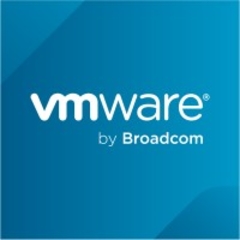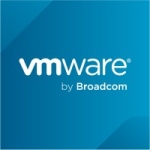What is our primary use case?
I was part of the VMware team, doing a double role at VMware:
- Leading a sales team for the large financial institutions, the top 50.
- Defining what the roadmap for vRealize suite should be.
I worked for a consulting company. We helped a lot of customers with many things for vRA from provisioning workflows automation to approvals and policies management.
The solution provides a multi-cloud, self-service, infrastructure-as-a-service cloud consumption and delivery layer. vRA 7 was mostly focused on VMware-based internal clouds with a little bit of external clouds. vRA 8 is multi-cloud, which you can host on-prem too. Everybody is moving away to use the cloud, so it is pretty much a done deal that you need to have it.
How has it helped my organization?
If you want to start a VM database as a service, then you start a VM, but your customers don't know what size CPU or memories that they want. So, you can also scale it as needed. They can use vRA integration to monitor and scale up or down using the ESXi Server, then VRa works as an integration point.
A lot of its DevOps for infrastructure capabilities improve reliability. Much effort was put in by some customers, like a large automobile manufacturer, a large telecom, and two large banks, to achieve a certain level of capabilities in this space. These DevOps for infrastructure capabilities have saved time for developers. In one use case for a large marketplace, a typical release cycle took about 80 hours and was brought down to three hours by automating deployment for developers. The quicker that deployments happen, the faster that they can do their product release cycles.
When you start integrating vRA with the other VMware products, like vRealize Network Insight (vRNI). That is when it starts giving you the capabilities of extending your templates and networks across multiple hybrids and clouds.
If an organization has the capability of being able to use it in their application deployment lifecycle, then they can use the automated infrastructure deployment, but not many companies do. Not many companies say, "When I am going to deploy, I am also going to create 20 virtual machines and deploy on them." They normally start out by saying that there will be a separate team with managers in infrastructure and a separate team that does this in deployment. I have seen only one place that has done this, out of hundreds.
What is most valuable?
Two things help out a lot:
- Policy management.
- Integration with other VMware feeds, like ESXi Server. They have a pretty tight integration with those.
If you are trying to automate your capacity management tasks, moving VMs and resizing them, then you need to integrate down to the policy level by reconfiguring the use of servers. That is where these kinds of integration points help you.
vRA's multi-cloud self-service cloud consumption and delivery layer comes with centralized policy control and governance.
VMware cloud templates: These are predefined templates that work across multiple cloud, hybrid, and multi-cloud environments. You can use the same templates across various clouds, even clouds that have AWS, Azure, and Google. So, you can have a blueprint and templates running across all of them.
vRA is most helpful in managing the whole lifecycle, taking out the server, bringing them back in, handling outages, and managing clusters, networks, and the entire infrastructure security out there as well as putting identity management all in one place. It creates a control point with its single pane of glass. You can control all the networks as well as their configuration and installation from one place, which is a strength of vRA.
What needs improvement?
Interoperability is more of an industry problem. There are multiple cloud provisioning tools out there, and vRA is just one of them. There are a lot of components out there, which all do certain things. There are some hard drives, particular types of servers, particular types of routers, load balancers, and firewalls, where some are stronger in one area and some in another. Interoperability between them would be a good thing.
With the workflow aspect, which has manual intervention, a policy needs to be approved by somebody. There could be better management of that piece with better templates. It is like a workflow engine, but does not have enough example templates to do certain things. A lot of people waste a lot of time trying to figure out the same thing, and everybody is trying to figure out the same thing, e.g., how to make a MySQL cluster in a Windows environment?
Buyer's Guide
VMware Aria Automation
December 2025
Learn what your peers think about VMware Aria Automation. Get advice and tips from experienced pros sharing their opinions. Updated: December 2025.
879,768 professionals have used our research since 2012.
For how long have I used the solution?
I used vRA for seven to eight years, then I moved out of the VMware world last year in January.
What do I think about the stability of the solution?
vRA 8 onwards is very stable. vRA 7 has some clunkiness, but version 8 is very stable.
What do I think about the scalability of the solution?
Hardware depends upon the volumes. I had small customers who had two to three clusters of eight servers each to an enterprise customer with 80,000 servers.
How are customer service and support?
They have a very big community with a lot of support.
VMware has its own support, but it depends upon what level of customer you are. Bigger customers obviously get better support than smaller customers. However, bigger customers also try funky things. Smaller customers tend to do things based on the standard, so they normally don't run into problems. The technical support is pretty good.
How was the initial setup?
The initial setup is relatively straightforward.
From the time that a customer enters into an agreement to using the service, it takes two to three weeks minimum because it takes time to design the whole network.
You need to have a basic cloud infrastructure in place. With an existing cloud infrastructure, the initial setup takes a couple of days. Most of the time, it is a deployment where you are also building the cloud with it, then all kinds of things are required, like the network topology, routers, security, etc. That takes time.
What about the implementation team?
vRA 8 is normally managed by a single guy.
What's my experience with pricing, setup cost, and licensing?
Customers say this solution is costlier compared to its competitors.
Which other solutions did I evaluate?
The open source solutions are cheaper, but they lack documentation. They also have trouble keeping the documentation, drivers, etc. up-to-date.
What other advice do I have?
For any cloud-related thing, you have to think it through. Things get sticky, like external firewalls. Distribute, network, and plan because you are not going to get it right the first few times.
vRA is an orchestration engine, like a workflow engine. What it comes down to, because it is more of a generic tool, what are you using it for? I have seen in places that it has helped people in ITOps.
VMware's goal is to build a long-standing partnership.
I would rate it as a nine (out of 10).
Disclosure: My company does not have a business relationship with this vendor other than being a customer.


















